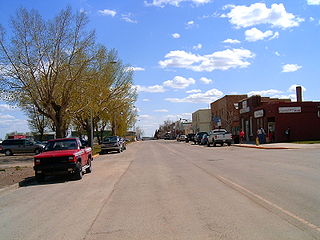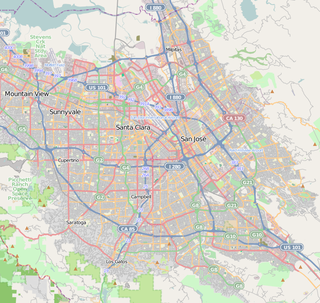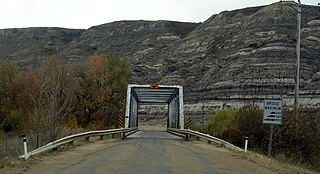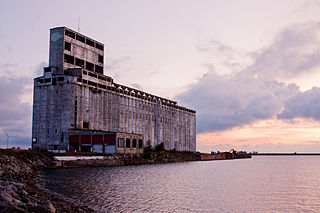
The Irvine Company is an American private company focused on real estate development. It is headquartered in Newport Beach, California, with a large portion of its operations centered in and around Irvine, California, a planned city of 250,000 people mainly designed by the Irvine Company. The company was founded by the Irvine family and is currently wholly owned by Donald Bren. Since the company is private, its financials are not released to the public. However, Donald Bren is the most wealthy real estate developer in the United States, valued at $15.2 billion.

Tallgrass Prairie National Preserve is a United States National Preserve located in the Flint Hills region of Kansas, north of Strong City. The preserve protects a nationally significant example of the once vast tallgrass prairie ecosystem. Of the 400,000 square miles (1,000,000 km2) of tallgrass prairie that once covered the North American continent, less than 4% remains, primarily in the Flint Hills. Since 2009, the preserve has been home to the growing Tallgrass Prairie bison herd.

Bowness is a neighbourhood and former town in west Calgary, Alberta, Canada. The former town was amalgamated into the City of Calgary in 1964.

Carstairs is a town in central Alberta, Canada. It is located on Highway 2A, 241 kilometres (150 mi) south of the provincial capital, Edmonton, and 48 kilometres (30 mi) north of Calgary, the nearest major city. The closest neighbouring communities are the towns of Didsbury and Crossfield. Carstairs is located entirely within the rural Mountain View County.

Stirling is a village in the County of Warner No. 5, Alberta, Canada. The village is located on Highway 4, approximately 31 km (19 mi) southeast of Lethbridge and 72 km (45 mi) northwest of the Canada–US border.

Big Valley is a village in central Alberta south east of Red Deer. It is located 32 km (20 mi) south of Stettler and 64 km (40 mi) north of Drumheller on Highway 56 in the County of Stettler No. 6.

Patrick Burns was a Canadian rancher, meat packer, businessperson, senator, and philanthropist. A self-made man of wealth, he built one of the world's largest integrated meat-packing empires, P. Burns & Co., becoming one of the wealthiest Canadians of his time. He is honoured as one of the Big Four western cattle kings who started the Calgary Stampede in Alberta in 1912. While making his fortune in the meat industry, ranching was his true passion. Burns' 700,000 acres (2,800 km2) of cattle ranches covered so vast an area of Southern Alberta that he could travel from Cochrane to the US border without ever leaving his land. In 1931, he was appointed to the Canadian Senate as a representative for Alberta. On October 16, 2008, the Calgary Herald named Burns as Alberta's Greatest Citizen.

The Churn Creek Protected Area is a 36,747-hectare (90,800-acre) provincial protected area in British Columbia, Canada. It is a mix of dryland canyon and steppe and adjoining rangeland flanking the canyon of Churn Creek and that stream's confluence with the Fraser River at the northern apex of the Camelsfoot Range. The historic Gang Ranch is just north of the Churn Creek Protected Area. The Empire Valley Ranch ecological preserve was added to the Protected Area in an expansion.
Elfin Forest is an unincorporated residential community of San Diego County, in the foothills of the Santa Rosa Mountains. The quiet grouping of homes is southwest of Escondido and according to the USGS it is located at 33°04′25″N117°09′51″W in the Escondido zip code of 92029. It borders the rural, unincorporated town of Harmony Grove to the northeast, San Marcos to the north and west, Olivenhain to the southwest, and Rancho Santa Fe to the south.

The Picchetti Winery, also known as the Picchetti Ranch, is a winery located at 13100 Montebello Rd., Cupertino, California in the Picchetti Ranch Open Space Preserve. The Picchetti brothers, Secondo and Vincenzo, for whom the ranch was named, were among the earliest settlers to plant grapes on this ridge, which they named "Monte Bello" or "beautiful mountain." This ridge was later to become one of Santa Clara County's important vineyard areas.

New Dayton is a hamlet in southern Alberta, Canada within the County of Warner No. 5. It is located on Highway 4 between the villages of Stirling and Warner, approximately 48 kilometres (30 mi) southeast of Lethbridge. New Dayton was named for their former home by settlers from Dayton, Ohio.
Development-supported agriculture is a nascent movement in real estate development that preserves and invests in agricultural land use. As farmland is lost due to the challenging economics of farming and the pressures of the real estate industry, DSA attempts to reconcile the need for development with the need to preserve agricultural land. The overall goal of DSA is to incubate small-scale organic farms that co-exist with residential land development, providing benefits to farmers, residents, the local community, and the environment.
California Rangeland Trust is a nonprofit organization founded in 1998 by a group of innovative ranchers committed to conservation. The Rangeland Trust is now the largest land trust in California, having conserved nearly 300,000 acres (1,200 km2) of rangeland on 61 ranches across 24 counties.

The Audubon Kern River Preserve is a riparian nature reserve owned by the National Audubon Society in the US state of California, near Weldon in Kern County.

The David L. Shirk Ranch is a historic ranch located in the Guano Valley of eastern Lake County, Oregon, United States. The ranch was originally homesteaded in 1881. It was purchased by David L. Shirk in 1883. He operated the ranch until 1914. The property was acquired by the United States Government in 1942. The ranch is now administered by the Bureau of Land Management. The remaining historic ranch buildings are listed on the National Register of Historic Places.
John Hextall was a landowner who founded the community of Bowness, now part of Calgary, Alberta, Canada.
The Modini Mayacamas Preserves are located in the Mayacamas Mountains, east of Healdsburg, California. The Preserves are roughly split by Pine Flat road and are east of Alexander Valley and northwest of Knights Valley. The current stewards of the property are Audubon Canyon Ranch, a private preservation organization involved in nature education, conservation science, and land stewardship. They own over 5,000 acres of property in Marin, Lake, and Sonoma Counties.

The Big Sur Land Trust is a private 501(c)(3) non-profit located in Monterey, California that has played an instrumental role in preserving land in California's Big Sur and Central Coast regions. The trust was the first to conceive of and use the "conservation buyer" method in 1989 by partnering with government and developers to offer tax benefits as an inducement to sell land at below-market rates. As of 2016, it has protected around 40,000 acres (16,187 ha) through acquisition and resale to government agencies. It has added conservation easements to another 17,000 acres (6,880 ha) and has retained ownership of a number of parcels totaling about 4,500 acres (1,821 ha).

























